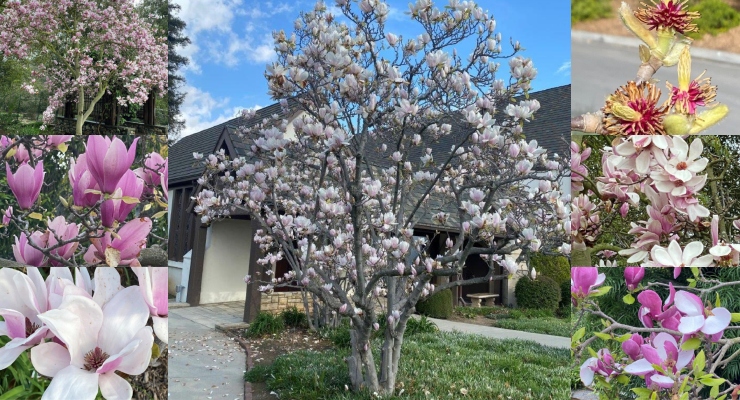
Each month, Pasadena Beautiful Tree Program Chair Emina Darakjy presents a ‘tree of the month’ in order to educate Pasadenans about the trees around them. Many people drive by trees they admire, but have no idea what they are called, or what their growing habits are. Pasadena Beautiful was founded in 1960 by a group of volunteers who saw a need to beautify their city and enhance its tree canopy.
This tree is from the Magnoliaceae family and is native to France and Japan.
The small to medium size, deciduous tree—which can reach a height and width of 20 to 25 feet—is a hybrid magnolia that was bred by French botanist Etienne Soulange-Bodin in 1826, when he crossed two Asian magnolias at his Chateaux de Fromont, near Paris.
For months before the flowers appear, tree branches are covered with fuzzy buds emerging from velvety leaves apple-green in color, alternate and oval.
In late winter to early spring, these buds develop into large, waxy and sweet-scented blooms appearing on bare branches. The blooms are tulip-shaped at first, then opening to a saucer form, exposing the prominent stamens. The flowers range in color from white to shades of light pink and deep purple. When in bloom, this tree is spectacular looking, providing a focal point in a park, or in one’s garden.
The magnolia trunk is smooth and silvery-gray, and the tree does best in full sun. It prefers rich and moist soil, but is considered drought-tolerant once established. The tree is known to tolerate pollution and can also survive a colder climate.
The Saucer Magnolia can be grown as a multi trunk with low branching or trained as a single trunk. Because of its small size, this tree is a good candidate for planting under power lines. It is also deer resistant. It attracts many pollinators and provides a good source of food for birds who like to build their nests in its branches.
The tree is very easy to care for and there are no serious known pests or diseases to worry about. Litter from its beautiful flowers can be a enviable problem, however.
If ever a magnificent ornamental tree shouted out, “Hello Spring!,” the Saucer Magnolia is the one.









